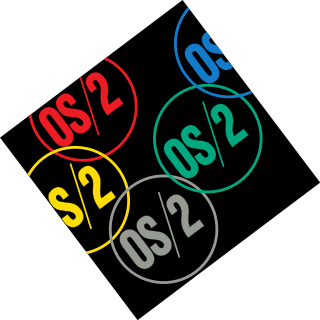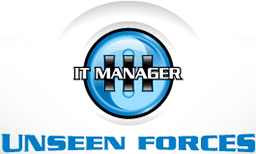
OS/2 is a series of computer operating systems, initially created by Microsoft and IBM under the leadership of IBM software designer Ed Iacobucci. As a result of a feud between the two companies over how to position OS/2 relative to Microsoft's new Windows 3.1 operating environment, the two companies severed the relationship in 1992 and OS/2 development fell to IBM exclusively. The name stands for "Operating System/2", because it was introduced as part of the same generation change release as IBM's "Personal System/2 (PS/2)" line of second-generation personal computers. The first version of OS/2 was released in December 1987 and newer versions were released until December 2001.

Nvidia Corporation is an American multinational technology company incorporated in Delaware and based in Santa Clara, California. It is a software and fabless company which designs graphics processing units (GPUs), application programming interface (APIs) for data science and high-performance computing as well as system on a chip units (SoCs) for the mobile computing and automotive market. Nvidia is a dominant supplier of artificial intelligence hardware and software. Its professional line of GPUs are used in workstations for applications in such fields as architecture, engineering and construction, media and entertainment, automotive, scientific research, and manufacturing design.

VMware, Inc. is an American cloud computing and virtualization technology company with headquarters in Palo Alto, California. VMware was the first commercially successful company to virtualize the x86 architecture.
Wind River Systems, also known as Wind River, is an Alameda, California–based company, subsidiary of Aptiv PLC. The company develops embedded system and cloud software consisting of real-time operating systems software, industry-specific software, simulation technology, development tools and middleware.
Workforce management (WFM) is an institutional process that maximizes performance levels and competency for an organization. The process includes all the activities needed to maintain a productive workforce, such as field service management, human resource management, performance and training management, data collection, recruiting, budgeting, forecasting, scheduling and analytics.
A configuration management database (CMDB) is an ITIL term for a database used by an organization to store information about hardware and software assets. It is useful to break down configuration items into logical layers. This database acts as a data warehouse for the organization and also stores information regarding the relationships among its assets. The CMDB provides a means of understanding the organization's critical assets and their relationships, such as information systems, upstream sources or dependencies of assets, and the downstream targets of assets.
PlateSpin is a software suite of Micro Focus International. Originally a standalone software company headquartered in Toronto, Canada, registered in Delaware, US as Platespin Inc. and founded by Robert Reive in 1999 with co-founders added later David Richards, Bruno Baloi and M. Verdun. Intel corp. via the Intel64fund was a key investor, along with 4Quarters Capital, Castlehill Ventures(Barry Laver) and AltaMira, the latter three all of Toronto, Canada. The original product for which the patent was filed was the Platespin Operations Center, the first usable VM provisioning tool for low cost deployment of servers in their VMs to Vmware ESX and GSX on 64bit processors. Platespin Operations Centre was designed to reduce operations cost and more efficiently use the resources of large servers, as well as deal with routine security patches to software servers and their OS efficiently. Today Platespin is a NetIQ suite of software that helps manage physical and virtualized server workloads on VMware, Microsoft Hyper-V, KVM, Citrix XenServer, Amazon Web Services and Microsoft Azure.
The Texas Advanced Computing Center (TACC) at the University of Texas at Austin, United States, is an advanced computing research center that is based on comprehensive advanced computing resources and supports services to researchers in Texas and across the US. The mission of TACC is to enable discoveries that advance science and society through the application of advanced computing technologies. Specializing in high performance computing, scientific visualization, data analysis & storage systems, software, research & development and portal interfaces, TACC deploys and operates advanced computational infrastructure to enable the research activities of faculty, staff, and students of UT Austin. TACC also provides consulting, technical documentation, and training to support researchers who use these resources. TACC staff members conduct research and development in applications and algorithms, computing systems design/architecture, and programming tools and environments.
Virtual Iron Software, was located in Lowell, Massachusetts, sold proprietary software for virtualization and management of a virtual infrastructure. Co-founded by Alex Vasilevsky, Virtual Iron figured among the first companies to offer virtualization software to fully support Intel VT-x and AMD-V hardware-assisted virtualization.
In computing, virtualization or virtualisation is the act of creating a virtual version of something at the same abstraction level, including virtual computer hardware platforms, storage devices, and computer network resources.

IGEL Technology is a German multinational software company best known for their "Next generation edge operating system" which is purpose-built for secure access to cloud workspaces such as Virtual Desktop Infrastructure (VDI) and/or Desktop as a Service.
IT cost transparency is a category of information technology management software and systems that enables enterprise IT organizations to model and track the total cost to deliver and maintain the IT Services they provide to the business. It is increasingly a task of management accounting. IT cost transparency solutions can integrate financial information such as labor costs, software licensing costs, hardware acquisition and depreciation, data center facilities charges from general ledger systems and combine this with operational data from ticketing, monitoring, asset management and project portfolio management systems to provide a single, integrated view of IT costs by service, department, GL line item and project. In addition to tracking cost elements, IT cost transparency may track utilization, usage and operational performance metrics in order to provide a measure of value or return on investment (ROI). Costs, budgets, performance metrics and changes to data points are tracked over time to identify trends and the impact of changes to underlying cost drivers in order to help managers address the key drivers in escalating IT costs and improve planning.

TenAsys is a privately owned company providing real-time software and services based on the x86 Intel Architecture and Microsoft Windows operating system.

IT Manager III: Unseen Forces was a web-based information technology (IT) simulation game from Intel in which the player managed an IT department in a corporate environment.
Linode, LLC was an American cloud hosting provider that focused on providing Linux-based virtual machines, cloud infrastructure, and managed services.
Cloud gaming, sometimes called gaming on demand or gaming-as-a-service or game streaming, is a type of online gaming that runs video games on remote servers and streams them directly to a user's device, or more colloquially, playing a game remotely from a cloud. It contrasts with traditional means of gaming, wherein a game runs locally on a user's video game console, personal computer, or mobile device.
Network functions virtualization (NFV) is a network architecture concept that leverages the IT virtualization technologies to virtualize entire classes of network node functions into building blocks that may connect, or chain together, to create and deliver communication services.
OrionVM Wholesale Pty Limited is an Australian infrastructure as a service provider and white-label cloud platform. Resellers present customers with a rebranded interface for deploying virtual machine instances, which are only billed for what their customers use. Cloud Harmony benchmarked the OrionVM Cloud Platform's InfiniBand-backed network storage as the world's fastest in 2011.

The Industrial Internet Consortium rebranded as the Industry IoT Consortium in August 2021. The Industry IoT Consortium is a program of the Object Management Group (OMG).
Data center management is the collection of tasks performed by those responsible for managing ongoing operation of a data center. This includes Business service management and planning for the future.






